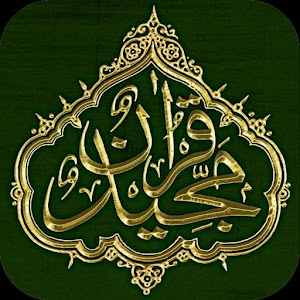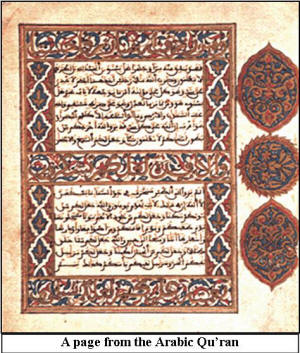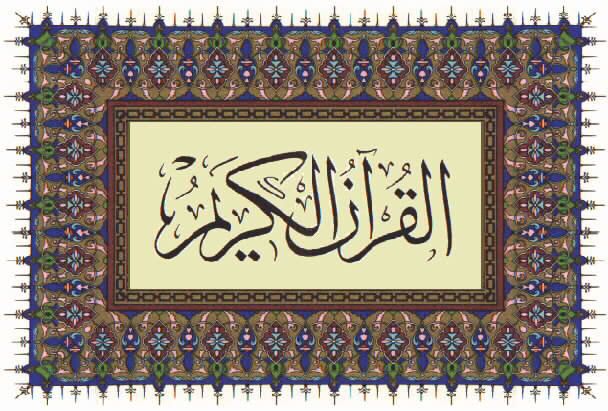Quran In Arabic Biography
Source (google.com.pk)Islahi was born in 1904 at Bamhur, a small village in Azamgarh (U.P.), India. He received his early education in two local schools of the village. His father Hafiz Muhammad Murtada was a small landlord of the area. Islahi was admitted to Madrasah Al-Islah in 1915 in grade three. This Madrasah is located in Sara’i-Mir, a small village near Bamhur. It was while addressing the convocation ceremony of the first batch of the Madrasah that he first came in the notice of the great Hamid Uddin Farahi, the person who was destined to become his mentor and guide.
The teacher which influenced him the most during his student life at the Madrasah was Mawlana ‘Abdu’l-Rahman Nigrami, himself a versatile genius. Mawlana Nigrami’s attention helped him in developing a profound inclination towards Arabic literature. After graduating from the Madrasah in 1922, he entered the field of journalism. For a while, he edited a newspaper Madinah at Bijnawr and also remained associated with Sach, a newspaper edited by Mawlana ‘Abdu’l-Majid Daryabadi.
It was sometime in 1925 when Farahi offered Islahi to come and study the Qur’an with him. Islahi abandoned his journalistic career with no hesitation at all to benefit from this glorious opportunity. He knew he had stumbled upon the ‘famous tide’: – ‘the tide in the affairs of men which when taken at the flood leads on to good fortune’. For the next five years till Farahi’s death in 1930, he remained with him like his shadow. It was in this forming period of his life in which he developed a deep understanding of the Qur’an and learnt from Farahi the principles of direct deliberation on the Book of Allah. During this time, he also taught the Qur’an and Arabic literature at the Madrasah.
After Farahi’s death, Islahi studied Hadith from a celebrated scholar of this discipline, ‘Abdu’l-Rahman Muhaddith Mubarakpuri. In 1936, he founded the Da’irah-i-Hamidiyyah, a small institute to disseminate the Qur’anic thought of Farahi. Under the auspices of this institute, he brought out a monthly journal, Al-Islah, in which he translated many portions of Farahi’s treatises written in Arabic. The journal was published till 1939, after which it was discontinued.
Islahi was among the founder members of the Jama‘at-i-Islami, a religious party founded by the eminent Islamic scholar, Mawdudi, in 1941. During his seventeen year stay in the Jama‘at, he represented the intellectual element of this party and remained a member of the central governing body (Majlis-i-Shura). During this period, he did the groundwork needed to write a commentary of the Qur’an – an objective which he had set before him early in life. In 1958, he abandoned the Jama‘at, after serious differences arose between him and Mawdudi on the nature of the constitution of the Jama‘at.
After leaving the Jama‘at, he finally got the chance to fulfil his cherished goal of writing a commentary of the Qur’an. He also launched a monthly journal Mithaq in which portions of this commentary, Tadabbur-i-Qur’an, were published. In 1961, he established a small study circle Halqa-i-Tadabbur-i-Qur’an for college students to whom he taught Arabic language and literature, the Holy Qur’an and the Sahih Muslim. In 1965, a tragic incident brought an end to the journal as well as to the study circle: Islahi’s eldest son Abu Salih died in a plane crash. However, work on the commentary continued. In 1970, Islahi fell severely ill and had to discontinue all his intellectual pursuits. Subsequently, he recovered quite miraculously. In 1972, he shifted to a countryside village near Sheikhupura, where he continued to work on the commentary till 1979, when he shifted back to Lahore. It was on the 29th of Ramadan 1400/ 12th August 1980 when the great day arrived – the day when a monumental effort reached its culmination: the Tadabbur-i-Qur’an had taken twenty-two long years to complete.
In 1981, Islahi founded the Idara-i-Tadabbur-i-Qur’an-u-Hadith, which remained until his death (15th December 1997) the centre of most of his intellectual activities. A quarterly journal Tadabbur was taken out in 1981 as its organ. He gave weekly lectures on the text of the Qur’an. Later, he took up deep study on the principles of Hadith and began teaching the Mu’atta of Imam Malik in weekly sittings to a close circle of students and associates. After completing the Mu’atta, he also taught some portions of Imam Bukhari’s Sahih. Many of these lectures have been transcribed and published in the Tadabbur
Quran In Arabic Quran Quotes Wallpapers Pak cover Sharif Verses Images Book Pender Images Pics Pictures

Quran In Arabic Quran
Quotes Wallpapers Pak cover Sharif Verses Images Book Pender Images Pics
Pictures


Quran In Arabic Quran Quotes Wallpapers Pak cover Sharif Verses Images Book Pender Images Pics Pictures

Quran In Arabic Quran Quotes Wallpapers Pak cover Sharif Verses Images Book Pender Images Pics Pictures

Quran In Arabic Quran Quotes Wallpapers Pak cover Sharif Verses Images Book Pender Images Pics Pictures

Quran In Arabic Quran Quotes Wallpapers Pak cover Sharif Verses Images Book Pender Images Pics Pictures

Quran In Arabic Quran Quotes Wallpapers Pak cover Sharif Verses Images Book Pender Images Pics Pictures

Quran In Arabic Quran
Quotes Wallpapers Pak cover Sharif Verses Images Book Pender Images Pics
Pictures

Quran In Arabic Quran Quotes Wallpapers Pak cover Sharif Verses Images Book Pender Images Pics Pictures

Quran In Arabic Quran Quotes Wallpapers Pak cover Sharif Verses Images Book Pender Images Pics Pictures

No comments:
Post a Comment